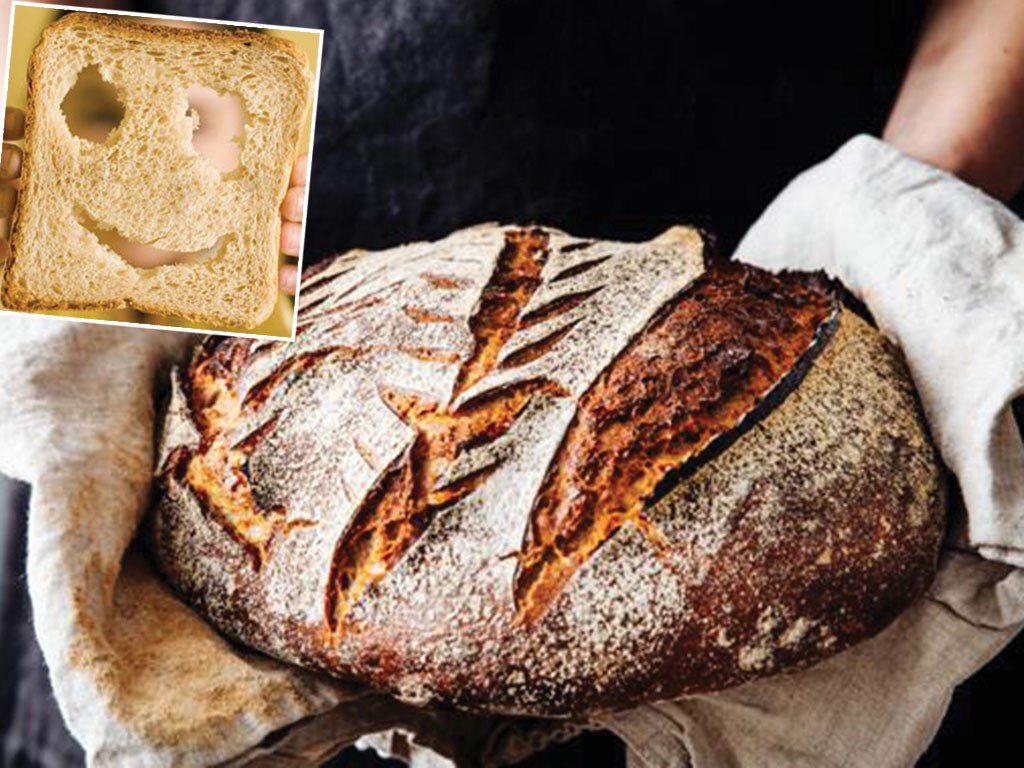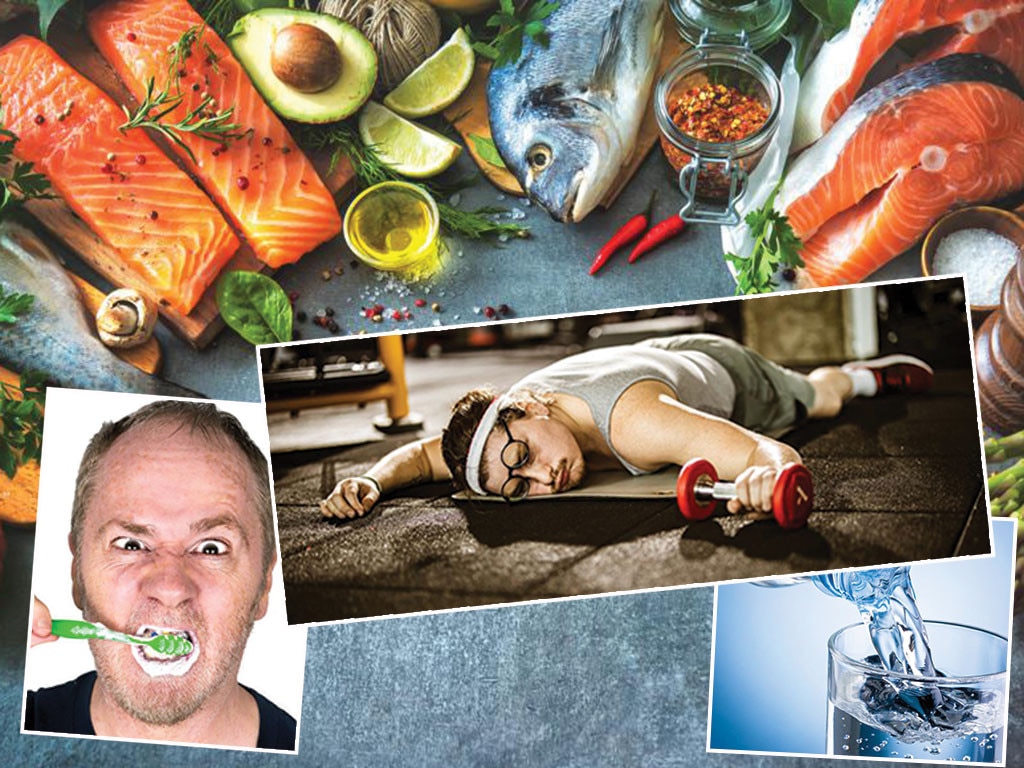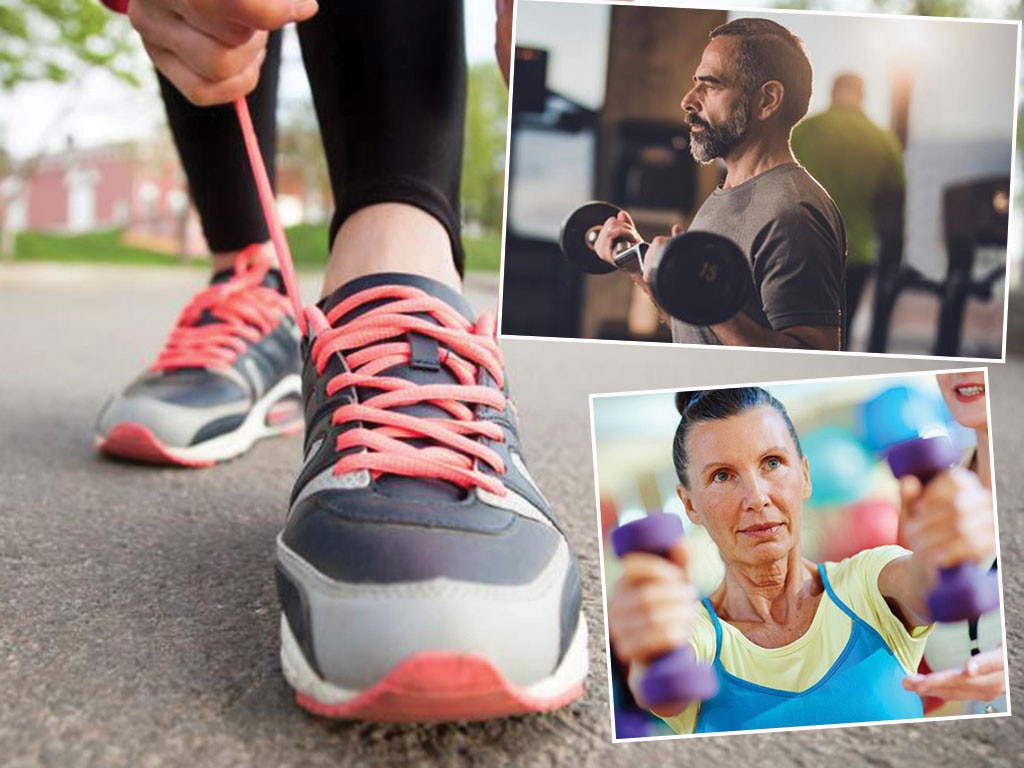The best (and worst) things you can eat, ranked by scientists
Scientists with an appetite for algorithms have developed a system for scoring 8000 foods and drinks according to their impact on our health.

Beyond the obvious — more vegetables and fruit, less meat, refined carbs and alcohol — what should we eat to stay healthy? In an attempt to answer this, Dariush Mozaffarian, a cardiologist and professor of medicine, and his team of researchers from the Friedman School of nutrition science and policy at Tufts University in Boston, Massachusetts, have created Food Compass, which they say is the most comprehensive system of ranking foods to date.
Over three years they have tested and profiled 8032 foods and drinks, and used an algorithm of 54 different attributes to give each item a score from 1 (the least healthy) to 100 (the most) based not only on the calories, salt and fat they contain, but also on a wide range of nutrients and levels of processing, additives and beneficial plant compounds, or phytochemicals. Also taken into account is a food’s impact on conditions such as obesity, diabetes, cardiovascular problems and cancer, and whether characteristics of each food have been scientifically proven to be healthy or harmful.
Foods and drinks scoring 70 or more should be encouraged, those ranked 31-69 should be consumed only in moderation and anything lower than 30 is best eaten infrequently.
Unsurprisingly, almost all raw fruits scored top marks, as did most nuts and seeds, while pulses were all in the seventies and eighties and seafood had an average 67. Eggs, milk and cheese scored an average of 62, while poultry was in the mid-forties and red meat in the twenties. Green vegetables including spinach, watercress and broccoli scored 100, as did tomatoes, peppers, cauliflower and most other raw or lightly cooked vegetables. Starchy veg, including corn and potatoes, have a relatively high amount of carbohydrate and can raise blood sugar so scored an average of just 43. And vegetables prepared with or cooked in fat had much lower scores than when steamed or lightly stir-fried. The lowest-scoring foods were snack products and sweet desserts, with an average of only 16.4.
There are some anomalies. “Sweet potato chips with no added salt make it as a moderately accepted food because they are cooked in healthy oils and have a reasonable nutrient profile with vitamin A, and are a good source of vitamin C and potassium,” Mozaffarian says. “Bulgur wheat is on the upper end of the moderate scale because, holistically, it doesn’t reach the same nutritional standards as some grains.” Some minimally processed animal products such as eggs, cheese and unprocessed red meat are considered fine in moderation, but highly processed varieties should be minimised, the researchers say.
Mozaffarian says the next stage of his research is to extend the database to up to 80,000 foods. “We will then study the impact of the food scoring system against the health outcomes of people who use it. We want to see how it affects their blood pressure, their weight, overall health and even their risk of death.”
For now, though, here’s a guide to what you should eat and drink:
DRINKS
Best:
Celery juice (Food Compass score: 100): High water content and contains antioxidants that may have anti-inflammatory properties. Plus more potassium and vitamin K than tomato juice and carrot juice.
Tomato juice, unsalted/unsweetened (100): Contains lycopene and other carotenoids that protect your cells from free radical damage, reducing inflammation in the body. Single 240ml serving delivers most of your daily vitamin C needs (40mg) and one fifth of vitamin A requirements.

Skim milk cappuccino (73): Provides calcium and protein from the milk. Coffee contains 500 plant components and lots of beneficial antioxidants such as hydrocinnamic acids and polyphenols that have been linked to the prevention of disease.
In moderation:
Oat or almond milk latte (59): Almond milk contains vitamin E, important for skin and eye health, and a serving of oat milk provides 2g of fibre, more than many milks. Both are low in saturated fat, but make sure they are fortified with nutrients including vitamin D and calcium. Cranberry juice, 100 per cent juice (53): A 250ml glass provides your daily vitamin C needs but it is processed with negligible fibre. Limited evidence it helps reduce urinary tract infections. Coconut water (44): Contains reasonable amounts of potassium but low concentrations of other nutrients, such as magnesium and calcium. It’s mostly water. Beware added sugar.
Worst:
Iced coffee mocha low fat milk latte (28): A chocolate and coffee fusion often containing syrup that can provide up to 60g of sugar and a ghastly 500 calories per cup. Sweetened cranberry juice with added vitamin C (11): Don’t be fooled by the fruit and added vitamin C. Sweetened cranberry juice can contain 11g of sugar per 100ml, more than in the same amount of cola. Cola/lemonade/sports and energy drinks including Gatorade/Monster (1): Most are a cocktail of sugars, water, caffeine and vitamins and add little of value. Sports drinks are useful only for hard endurance training.
GRAINS / PASTA
Best:
Quinoa (73): Relatively high in protein with sufficient amounts of all nine essential amino acids, quinoa also contains 2.2g of fibre per 100g, some B vitamins, potassium, vitamin E and various disease-fighting antioxidants.
Wild rice (72): Provides 1.7g of fibre per 100g and slightly fewer calories (101 per 100g) than brown rice. Plus potassium, magnesium and iron.
Wholegrain pasta (70): Twice as much fibre as white pasta – a 100g serving provides 3.8g of fibre, one seventh of the daily requirement – but also contains some iron and magnesium.
In moderation:
Bulgur (69): Slightly higher in fibre than quinoa and with some vitamin E, but fewer B vitamins and less protein.

Millet (65): Contains fibre and vitamin B6; unlike quinoa does not provide all nine essential amino acids.
Packet wholegrain rice with oil added (63): Most packet rices have oil added, which lowers their ranking, but still better than white.
Worst:
Noodles (17): Rice noodles have a higher glycaemic index than egg noodles, meaning they raise blood sugar more quickly. Both are highly processed. Opt for kelp or quinoa noodles instead.
White rice (10): Fewer calories than white pasta; fewer nutrients and fibre than brown rice. Researchers from Iran found that switching white for brown could help trim your waistline.
White pasta (9): Highly processed. A high intake of refined carbs including white pasta has been associated with high blood sugar and insulin resistance, risk factors for type 2 diabetes.
BREAD AND CEREALS
Best:
Shredded wheat (83): Made from 100 per cent wholegrain wheat with 6g of fibre in 2 biscuits – that’s one fifth of your daily intake. Improves gut health and helps to control cholesterol.
Instant porridge with plain water (79): Bumped from the top because they are rolled to a fine grain for speedy cooking that can cause blood sugar spikes. Opt instead for traditional rolled oats or steel-cut oats.
Ethiopian injera bread (71): Made from the gluten-free flour of the trendy teff grain, this flatbread provides some copper, magnesium, potassium, phosphorus, manganese, zinc and selenium as well as protein.

In moderation:
Whole-wheat tortilla (60): White tortilla wraps contain less fibre and protein than sliced white bread, so these are better but watch out for additives and preservatives and select multigrain where available.
Whole-wheat muffin (61): Typically 3.6g of fibre per muffin. More than double that in white variety (1.4g).
Whole-wheat bread (60): Better than white bread, but better still would be bread with linseed, poppy, caraway and sunflower seeds added for more fibre and nutrients.
Worst:
Cinnamon and raisin bagel (19): Usually sugar added on top of the dried fruit, plus it is low in fibre and uses refined flour.
White hot dog roll (6): Slightly more fibre than pitta (2.2g per serving) but often worrying levels of salt.
White pitta bread (1): Typically 165 calories per pitta compared with 93 in a 40g slice of white bread. Low fibre and nutrients. Best avoided.
FRUIT AND VEGETABLES
Best:
Blackberries, cranberries, grapefruit, raspberries, lemon, lime, orange, tangelo, apricot, rockmelon, papaya, peach, strawberries, nectarine – fresh/raw (100): Top scorers for their range of beneficial antioxidant plant compounds and fibre plus low calorie scores, but you still need a variety to get full benefits.
Fresh/raw/lightly cooked cauliflower, broccoli, spinach, kale, watercress, tomatoes, leeks, mixed salad leaves, peppers, radishes, cucumber, fennel and celery (100): Many other raw vegetables also score top marks, but you do need a good mix to ensure maximum antioxidants and fibre.
Prunes – dried, uncooked (85): High in fibre. Recent evidence that eating 4-5 prunes each day improves risk factors for cardiovascular disease and reduces inflammation.

In moderation:
Peaches, canned (57): Fresh is always best, but tinned (provided it is not in sugary syrup) is better than none and will provide some fibre and vitamin C.
Cherries, dried (55): A naturally sweet snack with vitamin C and vitamin A and reasonable amounts of fibre.
Roast parsnips (40): Contain potassium and antioxidants but are relatively high in carbs and sugar. Addition of fat during roasting means a lower score.
Pickled beetroot (37): Pickling process holds gut benefits and beetroots contain nitrates that are beneficial for blood pressure and blood flow. But can be high in sugar.
Worst:
Dried apple (28): Sugar and calorie dense. A medium-sized raw apple contains approximately 80 calories, but a small portion of dried apples has 210 calories.
Maraschino and glace cherries (26): Syrupy and sweet, they contain only slightly fewer calories per 25g serving (76) than jellied sweets.
Fruit served in a pudding (17): Peeled, processed and cooked fruit can lack the fibre and nutrients of raw fruit – and added sugar detracts from the health profile.
DAIRY / DAIRY ALTERNATIVES
Best:
Plain Greek yoghurt (95): Good source of calcium for bone health and provides iodine, vitamins D, B2 and B12, and zinc as well as beneficial bacteria for gut health. It contains more protein than regular yoghurt.
Unsweetened almond milk (86): Much less saturated fat than cow’s milk, good levels of vitamin E and among the lowest in calories of all plant milks with 13 per 100ml.
Soya milk (71): A complete source of protein, providing all nine essential amino acids required for health, and many brands are fortified with vitamin D, calcium and B12 to match amounts in dairy. Low in saturated fat. Avoid highly sweetened versions.
In moderation:
Eggs, milk, cheese (62-66): Rich in nutrients and fine in moderation. Kefir (56): Yes, it may be good for the gut – the jury is still out – but most varieties are made with sugar and flavoured varieties are highly sweetened. Best to make your own.

Reduced salt mozzarella (56): Tends to be naturally lower in sodium than many cheeses (0.6g per 100g compared with 1.81g in cheddar) and contains probiotic bacteria associated with gut health and immunity.
Worst
Processed cheese slices (27): High in salt, sometimes with added sugar, and added flavourings.
Chocolate milk (23): Unless you are a highly trained athlete who uses it for recovery fuel, best avoided as it just adds unnecessary sugar and calories.
SNACKS/SWEET DESSERTS
Best:
Frozen, low fat, dark chocolate yoghurt (80): Provided that it is not highly sweetened, it provides protein, calcium, some beneficial bacteria for gut health and a smattering of antioxidants from the dark chocolate.
Dark chocolate covered almonds (78): Almonds provide vitamin E and fibre and have been shown to boost levels of “good” HDL cholesterol. Dark chocolate contributes antioxidants linked to heart and brain health.
Air-popped plain popcorn (70): Research by the American Chemical Society in 2015 found plain popcorn to contain more healthy antioxidant “polyphenols” than some fruits and vegetables, mostly in the hull (the bit that gets caught in your teeth).
In moderation:
Sweet potato chips (69): The betacarotene, iron, vitamin C and magnesium in sweet potatoes partly offset the disadvantages that these are baked or fried in oil.
Plain halva (57): Sweet and high in calories, but the sesame it’s made with means it contains small amounts of B vitamins, vitamin E, iron, magnesium, zinc, selenium and antioxidants.
Sugar-free jelly (48): Contains collagen, the structural protein that supports bones, tendons, cartilage and skin.
Worst:
Sweetened frozen yoghurt (22): In terms of calories, sugar content, nutrients and processing this is no better than ice cream.
Croissants (1): Minimal fibre and nutrients, highly processed and often loaded with fat.
Marshmallow (1): Low in fat but a highly processed sugar shot.
The Times







To join the conversation, please log in. Don't have an account? Register
Join the conversation, you are commenting as Logout